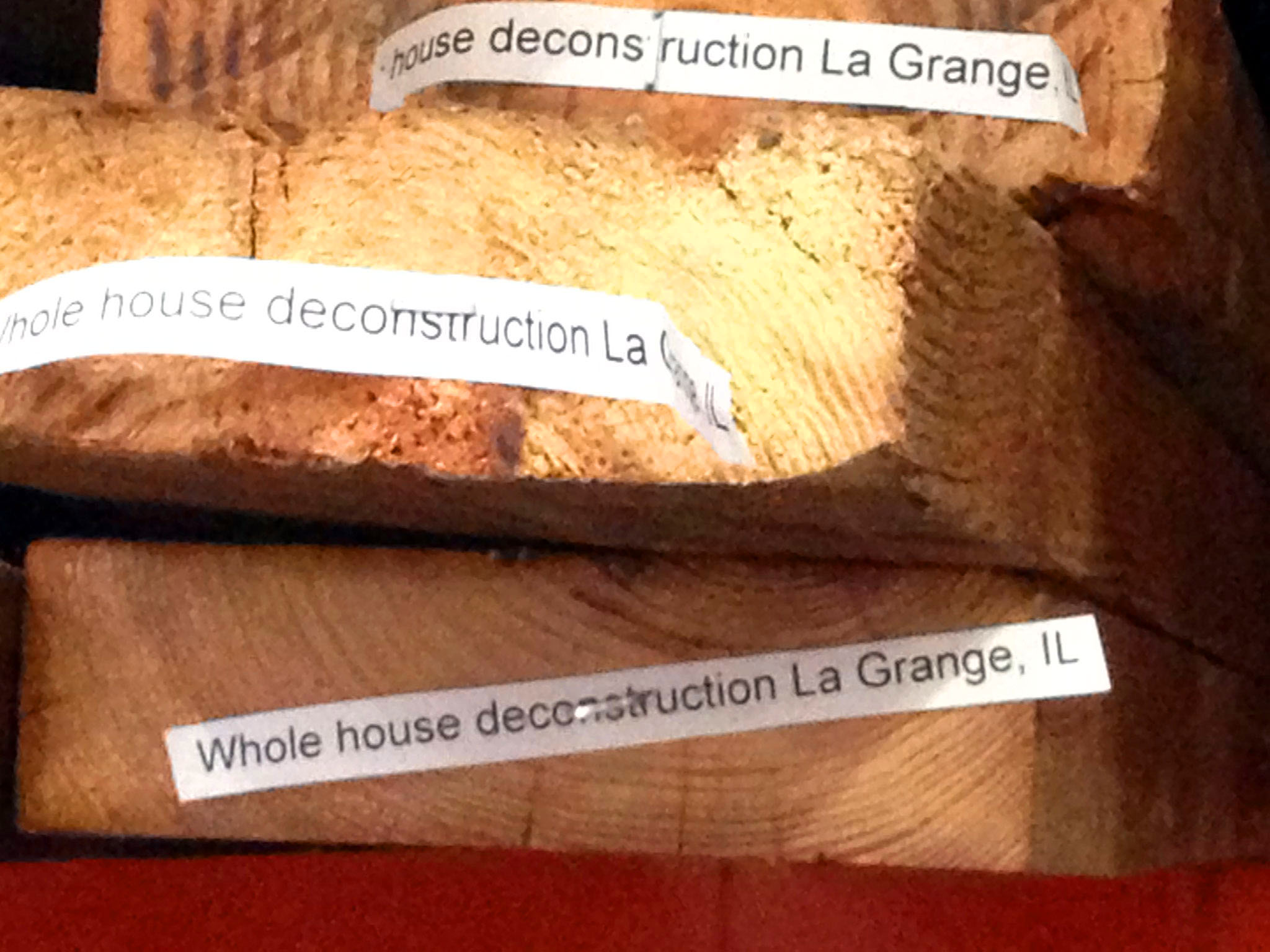By Katie Morris
It was through Green Community Connections that I first learned of the ReBuilding Exchange. I don’t remember who told me about it, or when I first came across this organization. All I remember is falling in love with its mission, and feeling grateful that there are people so dedicated and committed to making the world a better place.
The ReBuilding Exchange is a non-profit organization located on the north side of Chicago on the border of Lakeview and Bucktown. On a street that is filled with big box stores and grocery chains, like Marianos and Kohls, I accidentally drove right past the warehouse of the ReBuilding Exchange without even taking a second glance.
Walking through the doors, it’s easy to see why the ReBuilding Exchange is considered such a hidden gem! The first time that I, an avid do-it-yourselfer, stepped into the warehouse, I almost squealed with delight. Every square inch of space is filled with reusable materials; there are areas designated for lighting, plumbing, windows, doors, etc. My favorite is lumber. Looking at those shelves, it’s hard not to feel a connection to the past and imagine the story behind each piece of wood.
The ReBuilding Exchange’s mission is to create a market for reclaimed building materials and does so by diverting those materials from landfills, making them accessible for reuse through its retail warehouse. The ReBuilding Exchange promotes sustainable deconstruction practices, provides education and job training programs, and creates innovative models for sustainable reuse. Since it began in 2009, it has diverted over 9444.64 tons of building materials from landfill, and simultaneously created over $2 million worth of quality reuse materials available to the public. It’s open to the public; anyone can walk in and purchase whatever they like.
To get my feet wet in the rebuilding world, I chose Woodworking 101 as my first workshop. Woodworking 101 is a four-week series class designed to teach the basics of woodworking while students create a tabletop they take with them at the end of the course. Over the span of four weeks, I was able to learn basic shop safety, stock prep, and tool use, mainly using the jointer, planer, and chop saw.
On my first day, I entered the woodshop, and listened with rapt attention as the instructor went through the basics of our space. I went in with the sole purpose of learning the tools and getting the chance to use them. I hadn’t given much thought to the tabletop I would make. But after a brief tutorial, I was let loose with a tape measure, and instructions to select pieces of wood that, when stripped down and pieced together, would make a tabletop. I chose the pieces above from a mid-century deconstruct in LaGrange.
It’s hard to believe that after four short weeks, those pieces of wood, coupled with a large amount of elbow grease, were transformed into this (right).
The process was hard, and at times frustrating. It takes a lot of patience to plan your piece, strip your wood, glue it together, saw it down to size, sand, plane, polish and seal. But it’s worth it. When walking the aisles of a furniture store, you’ll never find something this unique. And of course there’s the added pride of having done it myself.
The workshop only includes the tabletop. So to make my project complete, I ordered four rod steel legs from a local tradesman through his shop on Etsy, DVAMetal.
There aren’t really any words to describe the feeling of having made something so useful and beautiful, while also doing something beneficial for the environment. If you’re interested in learning more about the ReBuilding Exchange, and how to incorporate reused building materials into your projects, check out www.rebuildingexchange.org.
Postscript:Growing up in the far western suburbs of Chicago, I became an Oak Park transplant in 2009 as a result of the recession. I never wanted to be here, and never imagined I would stay for very long. But now, still living in Oak Park more than five years later, I look back, and realize that it wasn’t until I got involved with Green Community Connections that I was able to make my first connections and felt a desire to stay. Over the years, I’ve had the opportunity to meet some pretty amazing people, making friends who are more like family, and getting to know people who are committed to sustainability--people who work tirelessly to create a better world for the generations to follow.



